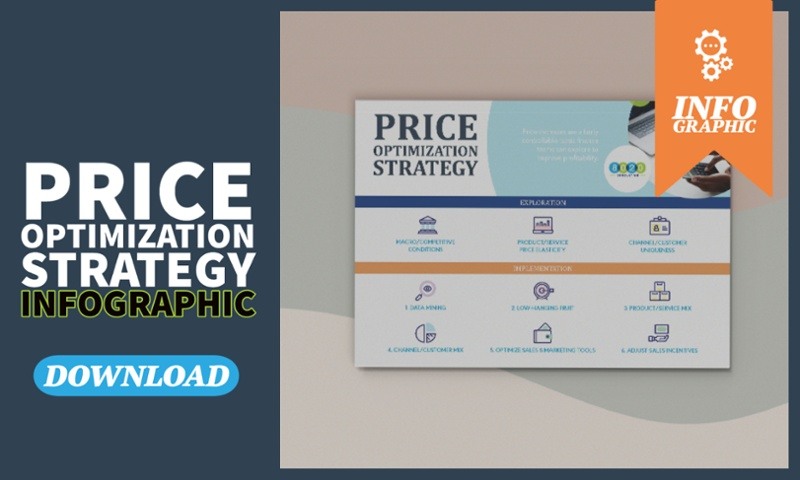It’s safe to say that most pricing playbooks lack sections on adjustments for global pandemics. In a past article, we offered recommendations for price increase strategy. Given the current challenges presented by COVID-19, we thought it’d be worth revisiting those recommendations. In today’s landscape, conditions may even warrant price decreases in some cases to maintain connections with channel partners and/or customers.
As before, as a first step in any pricing increase strategy, we suggest that Finance teams collaborate with Leadership, Sales and Marketing counterparts to objectively determine which, if any, products or solutions might warrant a price adjustment in this unique business landscape.
Revisited for COVID-19: Factors to Consider for Price Increases
Macro/Competitive Conditions
With variations of stay-at-home and social-distancing recommendations or regulations present in most parts of the world, overall economic activity has significantly decreased. This situation makes it challenging to implement price increases, all things being equal. Competitive pricing behavior (e.g., discounting, firmness, increases) should be observed to inform any proactive or reactive decisions that may be needed.
Elasticity Update
Customer buying power is lower due to COVID-19’s impact on sales volume for businesses, job losses for some consumers and general uncertainty of the future. If possible, companies should field fresh market research studies (online, since in-person is not possible) to have an updated view of elasticity for their products and/or solutions. Whether through a study or not, businesses should establish a view on whether their products/solutions are relatively “inelastic” (e.g., necessities like toilet paper, utilities, health/cleaning materials, etc.) or not. Many products/solutions may now be “elastic” or price sensitive, as more customers and buyers seek affordable (i.e., non-brand, non-premium) alternatives that are deemed “good enough.”
Special Channel/Customer Considerations
For businesses that are not direct-to-consumer, key channel partners/customers may have even more influence on what products and solutions they buy (given they’ve likely redesigned physical or virtual shelves to address COVID customer demand). They might also have more influence on preferred price points for a given category. Furthermore, channel partners/customers will likely scrutinize a vendor’s supply chain positioning (if applicable), as continuous availability will be a more important consideration than before.
COVID-19 Pricing Increase Strategy Recommendations
If a business is comfortable with the revised COVID considerations above to continue pursuing a price increase, the steps to implement are updated as follows.
Data Mining: COVID-19 Environment
Evaluation of more recent net pricing data should be conducted along the following dimensions to get a sense of the effects of the new business environment. Below are some considerations:
- Customer/Channel Mix – Sales volume shifts among customers/channels compared to pre-COVID-19 activity should be examined. Customers/partners with now higher volume (e.g., online) may have more leverage to push back against proposed price increases and vice versa. Businesses should also consider shifting their customer/channel mix to capture the most profitable opportunities.
- Geographic Location – Stay/work-at-home recommendations likely changed which stores, distribution centers or routes are high volume now compared to pre-COVID-19 times. Higher-volume locations may have new leverage to push back against proposed price increases and vice versa.
- Product Mix/Assortment – As discussed earlier, certain products/solutions will likely present themselves to be higher and lower volume than before in recent sell-through data, with surprising results. Businesses should be aware of these recent changes in product mix when considering what price adjustments to make, if any. Production may also need to be at least temporarily adjusted to meet new demand trends.
- Channel Margins – Any changes in channel margins since COVID-19 started should be reviewed. Changes should align with recent trends in customer/channel mix, volume, product mix and geographic concentrations as discussed above.
- Direct Financial Support / Cost-to-Serve – Challenging economic conditions may bring more requests by channels/customers to receive the five forms of financial support below. The above factors (i.e., channel mix, product mix, etc.) should be used as criteria to determine changes, if any, to these cost-to-serve components. Customer profitability scenarios should be reevaluated to factor in changes to these support mechanisms.
- Rebate levels
- Co-op marketing
- Bonus product/samples
- Marketing collateral
- Shipping/Handling or freight fees
Final Thoughts on Price Changes in a COVID-19 Environment
If any (up or down) price adjustment approach is proposed, we recommend positioning it as temporary for the current environment. Price decreases may be justified in what may be a rare period of deflation, which would imply an offset from lower costs to maintain profitability. For price increases, implementation should consider any potential risk of price gouging claims, especially of any products or solutions deemed as necessities. Lastly, rejiggered sales team incentives will likely be needed to steer the channel/customer and product mix in the desired direction.
If your business is looking for assistance with pricing increase strategy, or if you are thinking about bringing in operational finance or accounting consultants, contact us! We offer outside expertise with industry best practices and would be happy to help you define your needs and offer advice on next steps.
For more insight into this financial planning & analysis discipline, you can download our related infographic. It offers a clean and printable format that makes it a handy resource as you explore and implement price changes:

About the Author
Marco has 17 years of Finance and Consulting experience. His work spans various industries including technology, entertainment, telecommunications, consumer products, financial services, and healthcare. Marco has expertise in Financial Planning & Analysis (budgeting, forecasting, and reporting), Strategic Planning, project management, financial modeling, merger integration, and valuation. Prior to joining 8020 Consulting, Marco held Finance and Strategy positions at Epson America and also worked for various firms including Deloitte Consulting, Paramount Pictures, Grupo Modelo, Cricket Communications, UBS, and Goldman Sachs. Marco holds a B.A. in Economics from Brandeis University, and an MBA from the UCLA Anderson School of Management.
